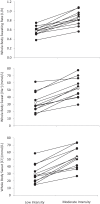Physiology of sweat gland function: The roles of sweating and sweat composition in human health
- PMID: 31608304
- PMCID: PMC6773238
- DOI: 10.1080/23328940.2019.1632145
Physiology of sweat gland function: The roles of sweating and sweat composition in human health
Abstract
The purpose of this comprehensive review is to: 1) review the physiology of sweat gland function and mechanisms determining the amount and composition of sweat excreted onto the skin surface; 2) provide an overview of the well-established thermoregulatory functions and adaptive responses of the sweat gland; and 3) discuss the state of evidence for potential non-thermoregulatory roles of sweat in the maintenance and/or perturbation of human health. The role of sweating to eliminate waste products and toxicants seems to be minor compared with other avenues of excretion via the kidneys and gastrointestinal tract; as eccrine glands do not adapt to increase excretion rates either via concentrating sweat or increasing overall sweating rate. Studies suggesting a larger role of sweat glands in clearing waste products or toxicants from the body may be an artifact of methodological issues rather than evidence for selective transport. Furthermore, unlike the renal system, it seems that sweat glands do not conserve water loss or concentrate sweat fluid through vasopressin-mediated water reabsorption. Individuals with high NaCl concentrations in sweat (e.g. cystic fibrosis) have an increased risk of NaCl imbalances during prolonged periods of heavy sweating; however, sweat-induced deficiencies appear to be of minimal risk for trace minerals and vitamins. Additional research is needed to elucidate the potential role of eccrine sweating in skin hydration and microbial defense. Finally, the utility of sweat composition as a biomarker for human physiology is currently limited; as more research is needed to determine potential relations between sweat and blood solute concentrations.
Keywords: Chloride; potassium; sauna; sodium; sweat biomarkers; thermoregulation.
© 2019 The Author(s). Published by Informa UK Limited, trading as Taylor & Francis Group.
Figures










References
-
- Casa DJ, Cheuvront SN, Galloway SD, et al. Fluid needs for training, competition, and recovery in track-and-field athletes. Int J Sport Nutr Exerc Metab. 2019;29(2):175–180. - PubMed
-
- Shibasaki M, Davis SL.. Human perspiration and cutaneous circulation In: Meyer F, Szygula Z, Wilk B, editors. Fluid balance, hydration, and athletic performance. Boca Raton (FL): CRC Press; 2016. p. 33–58.
-
- Sato K, Kang WH, Saga K, et al. Biology of sweat glands and their disorders. II. Disorders of sweat gland function. J Am Acad Dermatol. 1989;20(5 Pt 1):713–726. - PubMed
-
- McLellan TM, Daanen HAM, Cheung SS. Encapsulated environment. Compr Physiol. 2013;3(3):1363–1391. - PubMed
-
- Sato K. The physiology and pharmacology of the eccrine sweat gland In: Goldsmith L, editor. Biochemistry and physiology of the skin. New York: Oxford University Press; 1983. p. 596–641.
Publication types
LinkOut - more resources
Full Text Sources
Other Literature Sources
Medical
